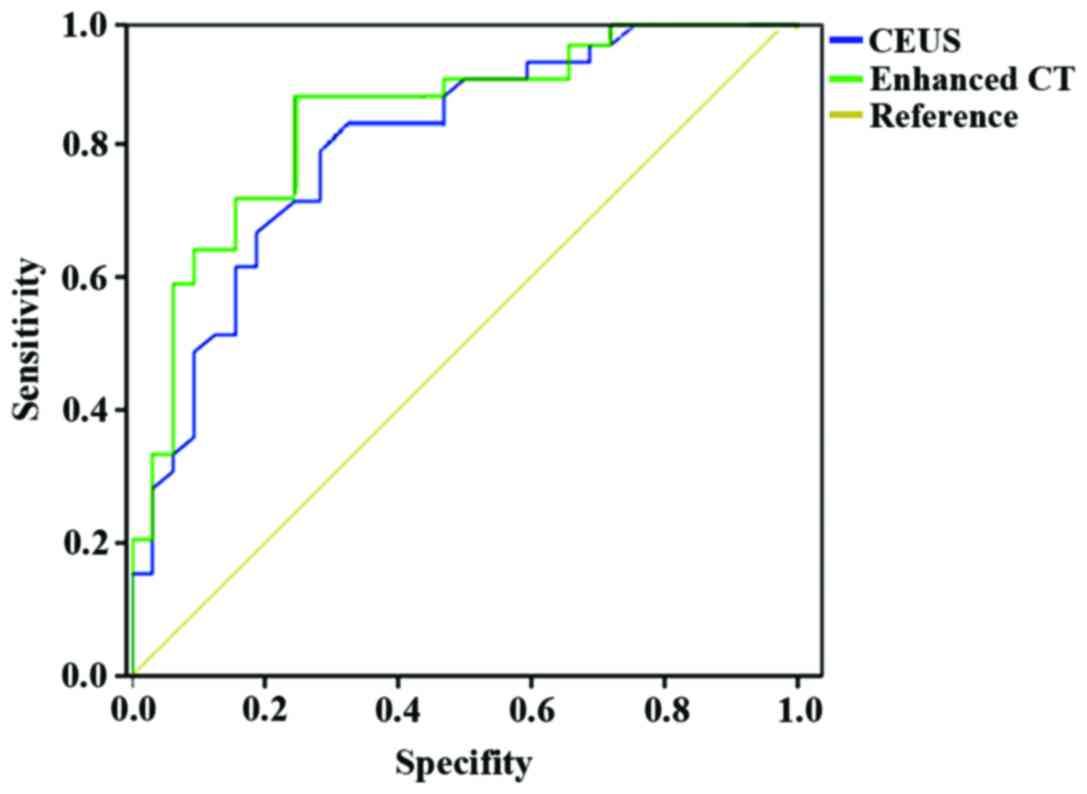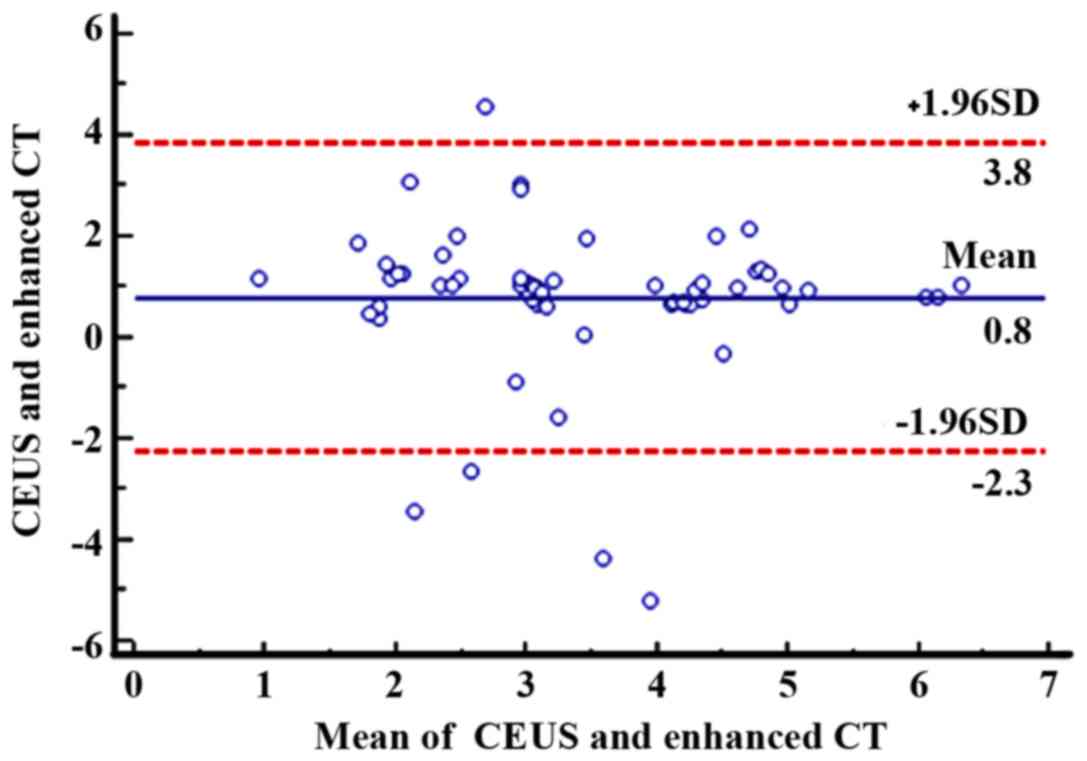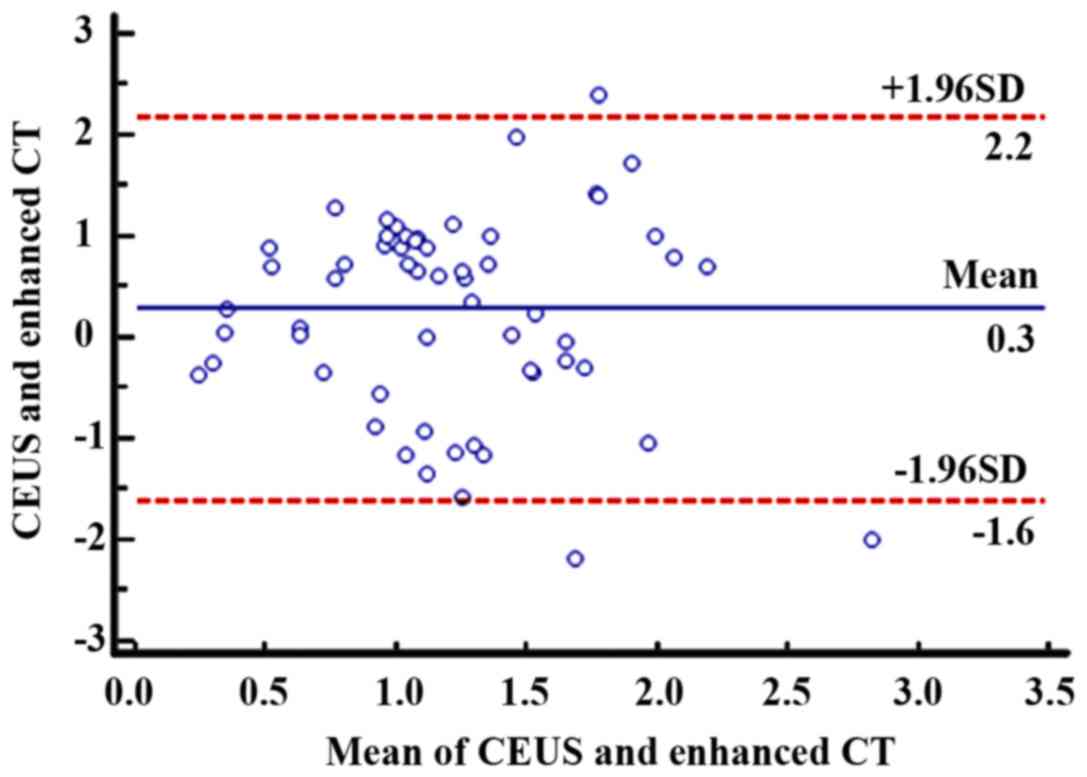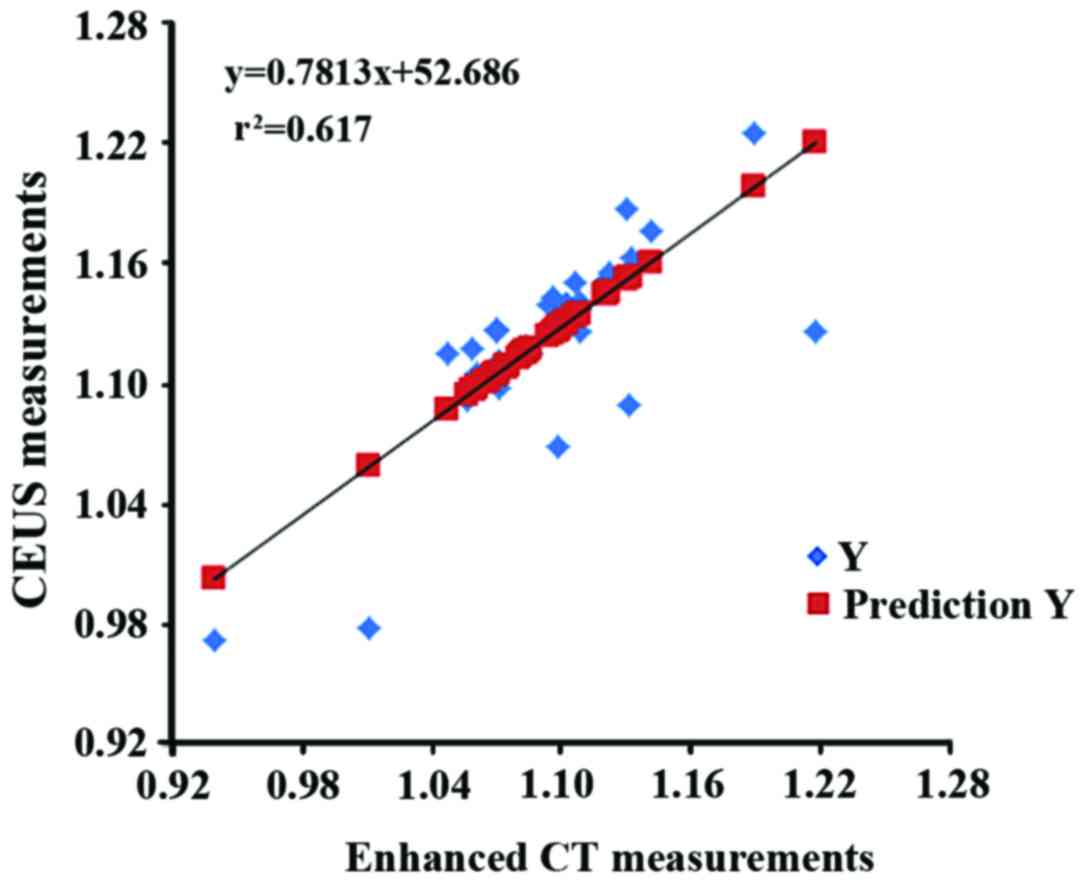|
1
|
Younossi ZM, Otgonsuren M, Henry L,
Venkatesan C, Mishra A, Erario M and Hunt S: Association of
nonalcoholic fatty liver disease (NAFLD) with hepatocellular
carcinoma (HCC) in the United States from 2004 to 2009. Hepatology.
62:1723–1730. 2015. View Article : Google Scholar : PubMed/NCBI
|
|
2
|
Lee JM, Park JW and Choi BI: 2014
KLCSG-NCC Korea Practice Guidelines for the management of
hepatocellular carcinoma: HCC diagnostic algorithm. Dig Dis.
32:764–777. 2014. View Article : Google Scholar : PubMed/NCBI
|
|
3
|
Kew MC: Hepatocellular carcinoma:
Epidemiology and risk factors. J Hepatocell Carcinoma. 1:115–125.
2014. View Article : Google Scholar : PubMed/NCBI
|
|
4
|
Hann HW, Coben R, Brown D, Needleman L,
Rosato E, Min A, Hann RS, Park KB, Dunn S and DiMarino AJ: A
long-term study of the effects of antiviral therapy on survival of
patients with HBV-associated hepatocellular carcinoma (HCC)
following local tumor ablation. Cancer Med. 3:390–396. 2014.
View Article : Google Scholar : PubMed/NCBI
|
|
5
|
Vardal J, Salo RA, Larsson C, Dale AM,
Holland D, Groote IR and Bjørnerud A: Correction of B0-distortions
in echo-planar-imaging-based perfusion-weighted MRI. J Magn Reson
Imaging. 39:722–728. 2014. View Article : Google Scholar : PubMed/NCBI
|
|
6
|
Yu MH, Kim JH, Yoon JH, Kim HC, Chung JW,
Han JK and Choi BI: Small (≤1-cm) hepatocellular carcinoma:
Diagnostic performance and imaging features at gadoxetic
acid-enhanced MR imaging. Radiology. 271:748–760. 2014. View Article : Google Scholar : PubMed/NCBI
|
|
7
|
Jiang N, Xie B, Zhang X, He M, Li K, Bai
J, Wang Z, He J and Zhang L: Enhancing ablation effects of a
microbubble-enhancing contrast agent (‘SonoVue’) in the treatment
of uterine fibroids with high-intensity focused ultrasound: A
randomized controlled trial. Cardiovasc Intervent Radiol.
37:1321–1328. 2014. View Article : Google Scholar : PubMed/NCBI
|
|
8
|
Bends R, Brössner A, Felberbaum R and
Römer T: Myoma in statu nascendi after transcervical radiofrequency
ablation of a transmural uterine leiomyoma. Gynakologische
Endokrinologie. 14:291–294. 2016.(In German). View Article : Google Scholar
|
|
9
|
Wang W, Liu JY, Yang Z, Wang YF, Shen SL,
Yi FL, Huang Y, Xu EJ, Xie XY, Lu MD, et al: Hepatocellular
adenoma: Comparison between real-time contrast-enhanced ultrasound
and dynamic computed tomography. Springerplus. 5:9512016.
View Article : Google Scholar : PubMed/NCBI
|
|
10
|
Sung JY, Baek JH, Jung SL, Kim JH, Kim KS,
Lee D, Kim WB and Na DG: Radiofrequency ablation for autonomously
functioning thyroid nodules: A multicenter study. Thyroid.
25:112–117. 2015. View Article : Google Scholar : PubMed/NCBI
|
|
11
|
Ikai I, Arii S, Okazaki M, Okita K, Omata
M, Kojiro M, Takayasu K, Nakanuma Y, Makuuchi M, Matsuyama Y, et
al: Report of the 17th nationwide follow-up survey of primary liver
cancer in japan. Hepatol Res. 37:676–691. 2007. View Article : Google Scholar : PubMed/NCBI
|
|
12
|
Hung HH, Chao Y, Chiou YY, Li CP, Lee RC,
Huo TI, Huang YH, Chau GY, Su CW, Yeh YC, et al: A comparison of
clinical manifestations and prognoses between patients with
hepatocellular carcinoma and Child-Pugh scores of 5 or 6. Medicine
(Baltimore). 93:e3482014. View Article : Google Scholar : PubMed/NCBI
|
|
13
|
Liu F, Wang J, Chang H, Lu J and Li H:
Relevance between HLA-DP gene rs2281388 polymorphism and
hepatocellular carcinoma risk. Int J Clin Exp Pathol. 8:7431–7435.
2015.PubMed/NCBI
|
|
14
|
Hong YM, Yoon KT, Cho M, Heo J, Woo HY and
Lim W: A case of small hepatocellular carcinoma with an extensive
lymph node metastasis at diagnosis. Clin Mol Hepatol. 20:310–312.
2014. View Article : Google Scholar : PubMed/NCBI
|
|
15
|
Chou CT, Chen RC, Lin WC, Ko CJ, Chen CB
and Chen YL: Prediction of microvascular invasion of hepatocellular
carcinoma: Preoperative CT and histopathologic correlation. AJR Am
J Roentgenol. 203:W253–W259. 2014. View Article : Google Scholar : PubMed/NCBI
|
|
16
|
George RT, Mehra VC, Chen MY, Kitagawa K,
Arbab-Zadeh A, Miller JM, Matheson MB, Vavere AL, Kofoed KF,
Rochitte CE, et al: Myocardial CT perfusion imaging and SPECT for
the diagnosis of coronary artery disease: A head-to-head comparison
from the CORE320 multicenter diagnostic performance study.
Radiology. 272:407–416. 2014. View Article : Google Scholar : PubMed/NCBI
|
|
17
|
Liu J-J, Li H-X, Chen Z-B, Yang W-P, Zhao
S-F, Chen J, Bai T, Li H and Li L-Q: Consistency analysis of
contrast-enhanced ultrasound and contrast-enhanced CT in diagnosis
of small hepatocellular carcinoma. Int J Clin Exp Med.
8:21466–21471. 2015.PubMed/NCBI
|
|
18
|
Trenker C, Neesse A and Görg C:
Sonographic patterns of renal lymphoma in B-mode imaging and in
contrast-enhanced ultrasound (CEUS) - a retrospective evaluation.
Eur J Radiol. 84:807–810. 2015. View Article : Google Scholar : PubMed/NCBI
|
|
19
|
Zhang ZG, Zhang WG, Wu YH, Liang HF, Zhang
BX and Chen XP: Incomplete RFA-generated heat shock response
provokes colorectal cancer liver metastases (CRLMs) recurrence by
inducing cancer cell stemness and invasion. Mol Cancer Res. 13(10
Suppl): Abst B472015. View Article : Google Scholar
|
|
20
|
Bo XW, Xu HX, Sun LP, Zheng SG, Guo LH, Lu
F, Wu J and Xu XH: Bipolar radiofrequency ablation for liver
tumors: Comparison of contrast-enhanced ultrasound with
contrast-enhanced MRI/CT in the posttreatment imaging evaluation.
Int J Clin Exp Pathol. 7:6108–6116. 2014.PubMed/NCBI
|


















